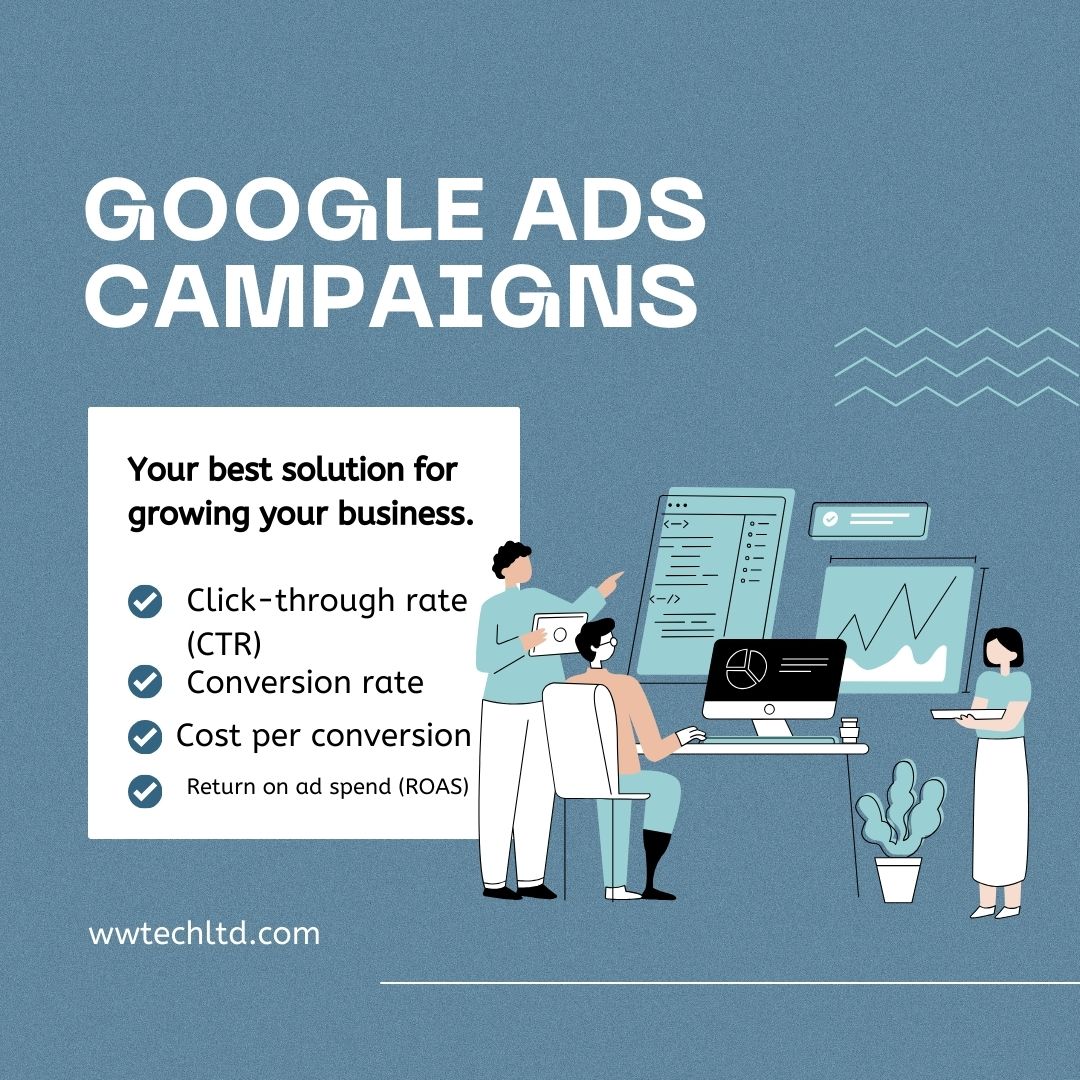Looking to maximize your return on investment (ROI) with your Google Ads campaigns? You’re in the right place. In this article, we will unravel the secrets to running successful Google Ads campaigns and share valuable tips and tricks to ensure you get the most out of your advertising budget.
With billions of searches happening on Google every day, it’s crucial to have an effective strategy in place to reach your target audience and drive conversions. By following proven best practices and leveraging the right techniques, you can significantly improve the performance of your Google Ads campaigns and increase your return on investment.
Whether you’re just starting out or looking for ways to optimize your existing campaigns, this article will provide you with actionable insights and strategies to succeed in the competitive world of online advertising. From choosing the right keywords and creating compelling ad copy to optimizing your landing pages and tracking your conversions, we’ll cover it all. Get ready to unlock the secrets of successful Google Ads campaigns and take your online advertising to the next level.
The in depth strategy for Google Ads campaigns
Google Ads is a powerful advertising platform that allows businesses to display their ads on Google’s search engine results pages (SERPs) and partner websites. It operates on a pay-per-click (PPC) model, where advertisers bid on keywords relevant to their business to have their ads displayed to users searching for those keywords.
To make the most of Google Ads, it’s important to understand how the platform works. It consists of several components, including campaigns, ad groups, keywords, ad extensions, and more. Each component plays a crucial role in the success of your campaigns.
One of the key features of Google Ads is its auction-based system, where advertisers compete for ad placement based on their bid amount and ad quality. Ad quality is determined by factors such as click-through rate (CTR), ad relevance, and landing page experience. Understanding these factors and optimizing your campaigns accordingly can greatly impact your ad performance and ROI.
Creating effective ad copy
Keyword research is the foundation of any successful Google Ads campaign. It involves identifying the keywords and search terms that are most relevant to your business and target audience. By targeting the right keywords, you can ensure your ads are shown to users who are actively searching for products or services like yours.
When conducting keyword research, it’s important to consider factors such as search volume, competition, and relevance. Tools like Google Keyword Planner can help you identify popular keywords and provide insights into their performance.
Once you’ve identified your target keywords, it’s important to organize them into relevant ad groups. This allows you to create more targeted ad copy and landing pages, increasing the chances of conversions. By continuously monitoring and optimizing your keyword selection, you can refine your campaigns over time and maximize your ROI.
Targeting strategies for Google Ads campaigns
Tracking conversions is essential for measuring the success of your Google Ads campaigns and optimizing them for better performance. Conversion tracking allows you to see which keywords, ads, and campaigns are driving the most valuable actions on your website, such as purchases, form submissions, or newsletter sign-ups.
To set up conversion tracking in Google Ads, you’ll need to install a tracking code on your website and define the actions you want to track as conversions. Google provides various conversion tracking options, including website conversions, app conversions, phone call conversions, and more.
Once you have conversion tracking set up, you can use the data to make informed decisions about your campaigns. For example, you can allocate your budget to keywords or campaigns that generate the most conversions or optimize underperforming ads to improve their conversion rates.

Budgeting and bidding strategies for maximum ROI
Targeting the right audience is crucial for the success of your Google Ads campaigns. Google Ads offers various targeting options to help you reach your desired audience, including:
- Location targeting: Target users based on their geographic location, such as country, city, or radius.
- Demographic targeting: Target users based on their age, gender, or household income.
- Interest targeting: Target users based on their interests or browsing behavior.
- Remarketing: Target users who have previously interacted with your website or ads.
- Custom intent targeting: Target users based on their search intent and behavior.
By combining different targeting options and continuously refining your audience targeting, you can ensure your ads are shown to the right people, increasing the chances of conversions and maximizing your ROI.
Optimizing landing pages for better conversions
Creating compelling ad copy is essential for driving clicks and conversions. Your ad copy should be concise, relevant, and highlight the unique selling points of your products or services. A strong call to action (CTA) is also crucial, as it encourages users to take the desired action, such as making a purchase or submitting a form.
When crafting your ad copy, consider the following tips:
- Use ad extensions to provide additional information and increase visibility.
- Test different variations of your ad copy to identify the most effective messaging.
- Incorporate keywords into your ad copy to improve relevance and quality score.
- Address the pain points of your target audience and offer solutions.
Remember, your ad copy is often the first impression users have of your business, so make it count!
Setting up conversion tracking in Google Ads
A well-optimized landing page is essential for maximizing conversions from your Google Ads campaigns. When users click on your ads, they should be directed to a landing page that is relevant to their search query and provides a seamless user experience.
To optimize your landing pages for better conversions, consider the following strategies:
- Keep your landing page design clean and visually appealing.
- Clearly communicate the value proposition of your products or services.
- Use persuasive and compelling copy to convince users to take action.
- Include trust signals, such as customer testimonials or security badges.
- Optimize your landing page for mobile devices to cater to mobile users.
By continuously testing and optimizing your landing pages, you can improve your conversion rates and maximize the ROI of your Google Ads campaigns.
Monitoring and analyzing Google Ads campaign performance
Effective budgeting and bidding strategies are essential for maximizing the ROI of your Google Ads campaigns. Here are some tips to help you make the most of your budget:
- Start with a realistic budget based on your business goals and industry competition.
- Allocate your budget strategically across campaigns and ad groups based on their performance.
- Consider automated bidding strategies, such as target CPA or target ROAS, to optimize your bids.
- Regularly monitor your campaigns and adjust your bids based on performance data.
- Test different bidding strategies and adjust them based on your campaign goals.
By closely monitoring your budget and bids, you can ensure you’re getting the most out of your advertising budget and maximizing your ROI.
Conclusion: Takeaways for a successful Google Ads campaign
Monitoring and analyzing the performance of your Google Ads campaigns is crucial for identifying areas of improvement and optimizing your campaigns for better results. Google Ads provides various performance metrics and reporting tools to help you track the effectiveness of your campaigns.
Some key performance metrics to monitor include:
Click-through rate (CTR): Indicates the percentage of users who clicked on your ads.
Conversion rate: Measures the percentage of users who completed a desired action on your website.
Cost per conversion: Calculates the average cost of acquiring a conversion.
Return on ad spend (ROAS): Measures the revenue generated for every dollar spent on advertising.
By regularly reviewing your campaign performance and analyzing the data, you can identify trends, optimize underperforming areas, and make data-driven decisions to improve your Google Ads campaigns.

